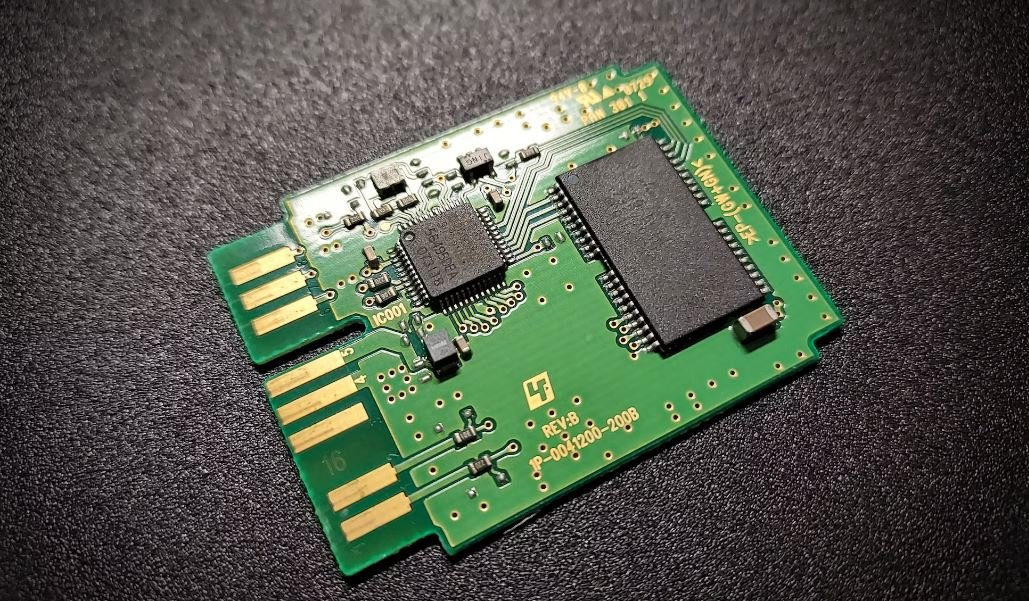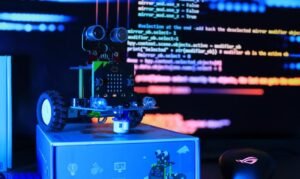Why Is Deepfake Used?
Deepfake refers to the creation of highly realistic, but fake, audio or video content using artificial intelligence techniques. It has gained significant attention in recent years due to the potential negative impact it can have on individuals and society as a whole. Understanding the motives behind the use of deepfake technology is crucial for tackling this emerging threat.
Key Takeaways:
- Deepfake technology is primarily used for entertainment purposes, including creating realistic video montages or GIFs.
- It can also be used for more malicious activities such as spreading disinformation, blackmailing individuals, or influencing political campaigns.
- Deepfake technology poses risks to privacy, trust, and the spread of misinformation, requiring further research and development of countermeasures.
**Deepfake technology** has gained popularity primarily for entertainment purposes. Many **creative artists** utilize this technology to create **realistic video montages** or GIFs by superimposing one face onto another, resulting in humorous or entertaining content. Moreover, deepfake technology has found its way into the film industry, allowing movie makers to **revive deceased actors** and involve them in new productions. *For instance, in the film “Rogue One: A Star Wars Story,” the character Grand Moff Tarkin was recreated using deepfake technology to resurrect the deceased actor Peter Cushing.* This showcases the potential of deepfake in the entertainment industry.
However, the growing misuse of deepfake technology for **nefarious purposes** cannot be ignored. **Malicious actors** can employ deepfake techniques to create **fake videos** or **audio recordings** with the intent to deceive, manipulate, or harm others. These could involve creating **fake pornography** with the likeness of celebrities or ordinary individuals, **spreading political disinformation** to influence election outcomes, or even **blackmailing individuals** by fabricating content that appears real. *The potential harm of deepfakes lies in their ability to manipulate public perception and create distrust.*
The Risks Associated with Deepfake Technology
Deepfake technology poses several risks to individuals and society as a whole:
- **Privacy concerns**: Deepfakes can violate an individual’s privacy by manipulating their images or voices without their consent.
- **Misinformation**: Deepfakes can spread fabricated information, leading to the proliferation of fake news and disinformation campaigns.
- **Social manipulation**: Deepfakes can be weaponized as a political tool to manipulate public opinion and sow discord.
Deepfake Use Cases and Impact
Let’s explore some interesting use cases and the impact of deepfake technology:
| Use Case | Impact |
|---|---|
| Manipulating political speeches | Can sway public opinion and influence election outcomes. |
| Creating fake celebrity endorsements | Can mislead consumers and impact brand reputation. |
| Fabricating evidence in legal cases | Can undermine the justice system and lead to wrongful convictions. |
Countering Deepfake Technology
Addressing the challenges posed by deepfake technology requires a multi-faceted approach and collaboration between various stakeholders:
- **Research and development**: Continued research is needed to improve deepfake detection methods and develop robust countermeasures.
- **Education and awareness**: Raising public awareness about the existence and potential negative impacts of deepfakes can help individuals be more vigilant and critical of media content.
- **Regulation and legislation**: Governments should consider enacting laws and regulations that address the illegal and malicious use of deepfake technology.
The Future of Deepfakes
The future of deepfake technology is both fascinating and concerning. As technology advances, deepfakes are becoming increasingly difficult to detect. It is essential to stay vigilant and proactive in addressing the risks they pose. By promoting ethical use and deploying effective countermeasures, we can mitigate the potential harms and ensure a safer digital environment.

Common Misconceptions
Deepfake Technology is Used Only for Harmful Purposes
There is a common misconception that deepfake technology is exclusively used for malicious activities, such as spreading disinformation or creating fake news. However, this is not entirely true. Deepfakes can also be used for legitimate and beneficial purposes, such as entertainment, artistic expression, and educational purposes.
- Deepfake technology can be used to create realistic special effects in movies and TV shows.
- Artists can use deepfakes to reimagine and reinterpret famous historical figures or iconic characters.
- Deepfake technology can be utilized in training simulations, allowing professionals like doctors and military personnel to practice specific scenarios.
Deepfakes Can be Easily Identified and Detected
Another misconception is that deepfakes are easily distinguishable from real content. However, with advancements in AI technology, it has become increasingly challenging to identify deepfakes accurately. Deepfake creators can now generate videos that are so convincing that even experts may struggle to spot them.
- Deepfakes can now replicate facial expressions, voice patterns, and body movements with remarkable accuracy.
- Modern deepfake algorithms can manipulate and adapt videos based on real-time input, making it harder to detect manipulated content.
- Deepfake detection tools often lag behind the creation of new deepfake techniques, making it a constant challenge to stay ahead.
Deepfake Technology is Limited to Manipulating Videos
Many people believe that deepfake technology is restricted to altering videos alone. However, deepfakes can now manipulate various types of media, including audio and images, which opens up new opportunities for potential misuse and deception.
- Voice deepfakes can emulate the speech patterns and intonations of a particular individual, creating synthetic audio that sounds like the person being impersonated.
- Image deepfakes can also alter images or photographs to make them appear more realistic or edit them to convey false information.
- Combining deepfake techniques with other technologies, such as augmented reality, can further enhance the manipulation potential of deepfakes.
Deepfakes are Always Immediately Harmful
Contrary to popular belief, not all deepfakes are inherently harmful or intended to deceive. While the potential for misuse does exist, many deepfakes are created for harmless purposes, such as entertainment or satire.
- Harmless deepfakes can be created for comedic purposes, such as creating viral videos or impersonations of celebrities.
- Political satire through deepfakes can provide commentary and promote critical thinking about political figures and events.
- Deepfakes can be used within the entertainment industry to create virtual performances or to bring deceased actors back to the screen.
Deepfakes are Widely Recognized and Understood by the General Public
While deepfakes have gained some media attention in recent years, there is still a significant lack of public awareness and understanding about the nature and impact of deepfake technology.
- Many individuals may not realize the potential dangers of deepfakes and their implications in areas such as privacy, security, and misinformation.
- Some people may mistake deepfakes for genuine content, exposing themselves to manipulated information without being aware of it.
- A lack of awareness can make it easier for deepfake creators to manipulate public opinion or exploit individuals unknowingly.

Introduction
Deepfake technology has become a subject of increasing concern and fascination in recent years. By employing artificial intelligence (AI) and machine learning algorithms, this technology allows the creation of realistic image, audio, and video manipulations that can deceive viewers and distort reality. It is crucial to understand why deepfake is used and the various implications it has on different aspects of society. In this article, we delve into ten captivating examples that shed light on the motivations behind the use of deepfake technology.
Table 1: Political Influence
Deepfake technology has been utilized in political scenarios to influence public opinion. By manipulating videos, individuals can create false narratives, spreading misinformation or discrediting opponents.
Table 2: Celebrity “Appearances”
Deepfake technology has allowed for the creation of videos featuring celebrities or public figures engaging in actions they never did in reality. These forged videos can deceive viewers and generate controversy.
Table 3: Adult Entertainment
Deepfake technology became popular through its use in creating adult content with the faces of celebrities or non-consenting individuals. This unethical application raises significant privacy concerns.
Table 4: Historical Fabrication
The use of deepfake technology for historical fabrications presents a cause for concern. By altering historical footage, it can distort the collective memory and influence the understanding of past events.
Table 5: Fake News
Deepfake videos have the potential to spread false information, contributing to the proliferation of fake news. They can mimic trusted sources, making it challenging to discern between reality and fabrication.
Table 6: Revenge and Cyberbullying
Deepfake technology is also responsible for enabling revenge porn and cyberbullying. By superimposing faces onto explicit images or videos, perpetrators can exploit and harm others.
Table 7: Identity Theft
Deepfake technology permits the impersonation of individuals, which can lead to serious consequences, such as identity theft. This raises concerns about personal security and online trustworthiness.
Table 8: Film and Entertainment
Deepfake technology has found applications within the film and entertainment industry, allowing filmmakers to recreate deceased actors or rejuvenate aging ones for storytelling purposes.
Table 9: Education and Research
Deepfake technology can also be used for educational purposes and research. It enables the recreation of historical figures, languages, and speeches, fostering immersive learning experiences.
Table 10: Law Enforcement
Deepfake technology has been utilized by law enforcement agencies to create training scenarios or forensic reconstructions. This can enhance investigative techniques and improve crime prevention strategies.
Conclusion
Deepfake technology possesses a vast range of applications, impacting numerous fields, including politics, entertainment, identity theft, and law enforcement. Understanding the ways in which deepfakes are employed is crucial to develop countermeasures against their misuse. It is essential for individuals and society as a whole to remain vigilant and critical when consuming media in an era where manipulation is becoming increasingly sophisticated. Through continued research, education, and technological advancements, we can mitigate the negative consequences and ensure the responsible use of deepfake technology.
Frequently Asked Questions
What are deepfakes?
Deepfakes are manipulated images or videos created using artificial intelligence (AI) techniques, particularly deep learning, to replace one person’s face or voice with another person’s likeness. They are used to create convincing yet fabricated media that can be difficult to distinguish from real footage.
Why are deepfakes created?
Deepfakes are used for various reasons, including entertainment, satire, political commentary, and even malicious purposes. They can be employed to create realistic impersonations of public figures, generate fake news, or manipulate footage for unethical and deceptive purposes.
In what industries or fields are deepfakes commonly used?
Deepfakes have gained significant attention and have been used in the entertainment industry, news media, political campaigns, social media, and academic research. They are a subject of concern due to their potential to spread misinformation and deceive viewers.
Can deepfakes be used as a form of social engineering?
Yes, deepfakes can be used as a form of social engineering to manipulate or deceive individuals. By impersonating someone’s identity or altering their words and actions, deepfakes can be leveraged to trick others into believing false information, engaging in harmful activities, or damaging reputations.
What are the ethical concerns with deepfakes?
Deepfakes raise significant ethical concerns as they can be misused to spread false information, damage reputations, violate privacy rights, and facilitate various forms of fraud. They also contribute to the erosion of trust in media and make it increasingly challenging to differentiate between real and manipulated content.
Are there any positive applications of deepfake technology?
While deepfakes have primarily been associated with negative consequences, there are potential positive applications as well. These include advancements in entertainment, such as enhancing visual effects in movies, creating lifelike virtual avatars for gaming, or preserving historical figures’ speeches and appearances.
How can deepfake technology be regulated?
The regulation of deepfake technology is a complex challenge. It involves implementing legal frameworks to address issues related to privacy, defamation, copyright infringement, and intellectual property rights. Additionally, increasing public awareness, investing in research and development of detection mechanisms, and collaboration between governments, technology companies, and researchers are crucial steps in controlling the proliferation and impact of deepfakes.
How can individuals detect deepfakes?
Detecting deepfakes can be challenging, as they can be highly convincing. However, there are certain indicators that can help identify manipulated media, such as abnormal facial movements, inconsistent lighting and shadows, misaligned features, or unrealistic audio cues. Additionally, AI-based tools and algorithms are being developed to assist in the identification and verification of deepfake content.
What are the potential future implications of deepfake technology?
The future implications of deepfake technology are wide-ranging and of significant concern. With the continuous improvement of AI and deep learning techniques, deepfakes may become even more convincing and virtually indistinguishable from real content. This could lead to increased challenges in combating misinformation, protecting privacy, and maintaining trust in media and information sources.




